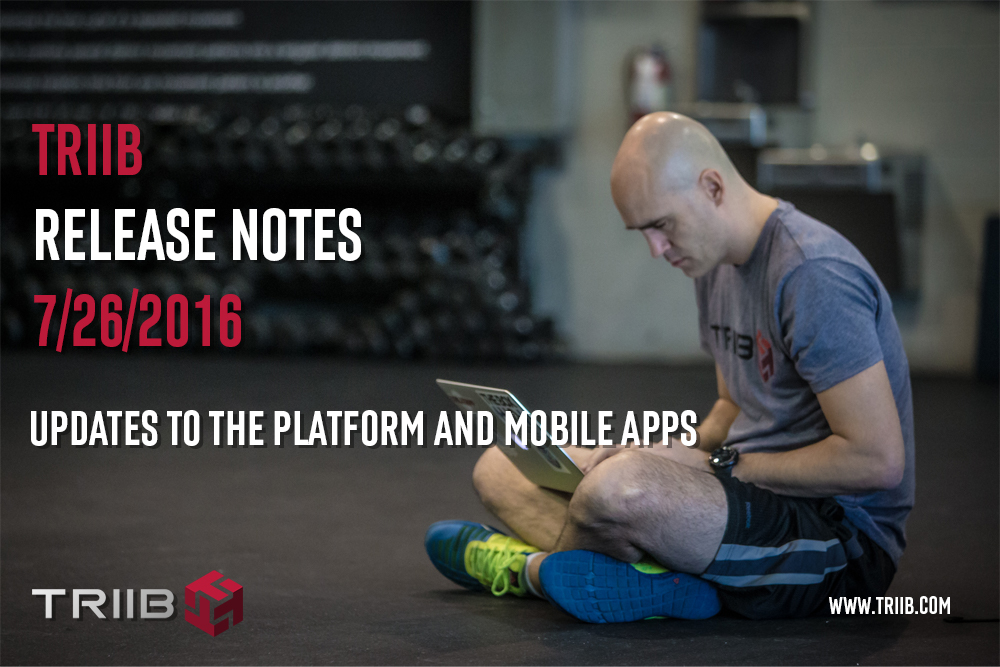Successful gym owners know the importance of tracking metrics for their fitness business. As a gym owner, you help your members to get into shape, and encourage them to track their progress through workout scoring. Similarly, getting your gym business into shape is a matter of keeping score. When it comes to making progress in the gym it’s not enough to just hope that if you work hard results will follow. The same goes for your business–you have to know the numbers in order to set a baseline for where your business is now, determine a goal for where your business to be, and track your progress from now until you reach those goals for your business. Triib Gym Owner, Jeff Woody, shares how he learned to keep score of his gym and improve his business metrics below.
Let me first express a giant caveat in this story. My business partner, Shawn, and I own North Ankeny CrossFit and Acceleration Iowa Ankeny and are far from perfect. Faaaaaar from it. We’ve been working as operations directors for a combined 15 years, but we have only been owners since May of 2018. We’re still figuring this out as we go and learning from failure. So take these as lessons hard-learned so you don’t have to.
Failing to keep score is a score of zero
One thing that I do know pretty well is how to work a Concept 2 rower during a workout. It’s one of my favorite movements, because rather than pacing yourself off of a feel — like “don’t get to muscle failure” — it literally tells you a number about how fast you’re going and how many reps per minute you’re performing — your calories per hour and strokes per minute. Calories per hour are probably between 900-1400 for women and between 1200-1700 for men. Strokes per minute are probably 28-32 for short people and 24-28 for taller people. Those two numbers will roughly calculate how fast those calories tick. But many people get distracted by the fact that the calories aren’t moving anywhere and totally lose sight of what they can actually control.
So how did I learn to keep score of my business? Let’s start at the beginning – It’s March of 2017. I’d just returned to the CrossFit world as the operations director at North Ankeny CrossFit (after a painfully dull year in the corporate world) in January, and we were looking to drive membership up. I’d finally stabilized in the position and Shawn and I knew we had a community that wanted to grow but didn’t really know how to do it, as we had no formal onboarding process at that time.
As many of you have probably done, we came up with a great booster idea: Partner Week. The drop-in rate is waived for anyone who comes in with a member and all workouts are partner workouts that can be scaled up and down for any skill or experience level. It was a great concept and home run for us. We added six new members that week alone, and for us at the time, that was a HUGE week.

But in the process of doing Partner Week, we also had to continue to care about our members. And at the time, neither I nor Shawn was all that good at client or member relations. Also, one time that is very convenient for people to fall through the cracks and discontinue membership are times when they’re not showing up anyway; vacations. Do you know what else is in March? Spring Break.
Our location is in an upper-middle-class suburb of Des Moines, Iowa, so spring break is a big deal. In the planning of, packing for, bragging about, and socializing around their vacations, there were three husband and wife pairs who stopped showing up before their vacation. Then they went on vacation. And then they didn’t come back after because it’d been three weeks since they last came in. +6 members in a week. -6 members for the month.
We did actually grow that March, but our month over month growth rate was much less than it should have been. And we didn’t realize exactly the missed opportunity we’d just had until after we retrospectively did the numbers later. When we looked back at our months (having figured out what we like to budget with), our CrossFit March had a 0.2% growth (revenue), a 6.3% monthly churn rate (people), and netted zero new members.
Like I said, we’ve learned a lot by failing.
If you don’t keep score, you won’t know if you’re ahead
Let me make a radical statement which may come as a shock to those of you whose hearts pushed them into this industry.
You are here to make money. Period.
The names in your head that you just called me are mean and I take offense to them. But seriously – the reason you get into this industry is not to make money. We all know that. We do what we do because we love helping people and we thrive on seeing the results that come from a good job; weight loss, confidence gains, better relationships, friends made, bigger smiles, endless gratitude. But that stuff all literally can’t happen if you can’t pay your mortgage or go buy yourself food from the store.
So you need to make money first to help people second. The core goal you have is to help, but your main means to make that happen is to make a profit. And profit is a fickle thing outside of one metric: monthly membership. And more specifically, monthly EFT (electronic funds transfers).
You can make a bunch of money off supplements like protein or pre-workout, drinks like Kill Cliff or FitAid, or apparel like shirts and sweats, but those things are invariably inconsistent. Sales of those items, depending on the personal budgets of people and families, can be stopped at any moment. They’re extremely discretionary and tend to be one of the first things cut in household budgets. So basing your income and banking on add-ons is unwise. But– if you’re doing a good enough job– your services will be one of the last things cut.
In February of 2017, we had $9,629 in membership revenue with services provided to (at some point) 89 members and were +2 net members. In March, we netted $9,649 with services provided (at some point) to 95 members and were +0 net members.
Revenue is to business as score is to fitness
Again, the ultimate goal is to increase the monthly dollar figure coming through. But like rowing for calories in a workout, you can’t make the calories go up by wishing them up, you have to control the two things that matter: the rate of calories per hour and your strokes per minute. The calories will come once you’ve controlled what you can control.
Your “calories per hour” that you can at least partially control is called “churn.” Churn is loosely defined as how many people stopped paying in any given time period. We calculate ours as a monthly figure, which is done by taking everyone who paid– or would have paid– you anything during the month. In March, we came into the month with 89 members. We had 6 newbies start, so our calculated value is 95. Churn is then calculated by dividing the number of people who canceled out of that 95. That was our 6 who left for vacation and never came back. So take 6/95 and you get 6.3% churn. Which is not ideal. We like to try and stay at or below 5% in any given month.
The fastest way to increase your membership dollars is to reduce this number, plain and simple. With a low churn comes a cascade of great things for you. If your members aren’t leaving, that means you’re doing an awesome job of integrating yourself into their lives and becoming indispensable. Likewise, if you’re indispensable, that means they’re going to tell their friends about you. And if they’re telling their friends about you, that means your trials and new members will go up. Therefore, if you continue to do a good job, your membership base has now increased, which means more people who can refer to more friends. So no matter how many new people you add, unless you reduce your churn, it’s like filling up a bucket with a mesh bottom.
The “strokes per minute” value is your net members at the end of any month, which is a correlate of churn. If you fill the hole at the bottom of the bucket and then add more water, the amount of water will increase. Both are necessary. And your work should be directed as hard as you can at those two metrics.
You can measure your output in a bunch of different ways as a business. But unless you’re looking at raw membership dollars, you probably will be panicking about many dollars later. And the way to increase them, just like the way to increase your calorie output on a rower, is to control the things you can control.
Reduce churn and net members. Control that monitor. Speed up that rower. Go buy yourself something nice. Like a new rower.




0 Comments